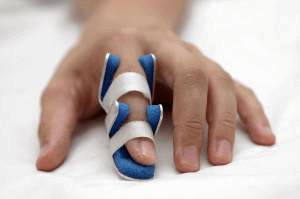Physiotherapy North York – P&C Rehab Services for Rehabilitation
Trigger Finger

Trigger finger is a painful condition in which a finger gets locked in a bent position. The similar condition in the thumb is called trigger thumb. The finger once bend gets straighten with a snap like a trigger being pulled and released. It occurs when the finger or thumb tendon gets inflamed. A tendon usually glides smoothly within its covering sheath, “synoviumâ€. In trigger finger, the bending finger or thumb can pull the inflamed tendon through a narrowed tendon sheath, making it snap or pop.
Causes
Repeated and forceful movement of the finger or thumb can cause trigger finger. The following are the leading causes of trigger finger.
- Rheumatoid arthritis.
- Gout.
- Diabetes.
- Farmers, industrial workers, and musicians often get trigger finger since they repeat finger and thumb movements. Even smokers can get trigger thumb from repeated use of a lighter.
- It is more common in women than men and tends to happen more between ages 40 to 60 years.
Symptoms
Signs and symptoms of trigger finger ranges from mild to severe and it includes:
- Soreness at the base of the finger or thumb.
- Finger stiffness, especially in the morning.
- Popping and clicking sensation when you bend the finger.
- Tenderness and a nodule in the palm at the base of affected finger.
- Finger gets locked in a bent position and must be gently straightened with other hand. This catching sensation tends to get worse after resting the finger or thumb and loosens up with movement.
Diagnosis
Trigger finger is generally diagnosed from the medical history and physical examination. During physical examination, the physiotherapist will ask the patient to open and close fingers several times and check the painful area. The physiotherapist will examine if there is a nodule at the base of finger and determine if there is locking of the finger. X-ray of the hand may be done to investigate arthritis. Blood test are prescribed to rule out under lying medical conditions like diabetes, gout, etc. causing trigger finger.
Treatment
Treatment depends on the severity of symptoms. The following is the main line of treatment and is started once the condition is diagnosed.
- Rest- Avoid activities that require repeated gripping, grasping and prolong use of fingers for at least 4-6 weeks. A splint may be given to keep the affected finger in an extended position. Splint helps to rest the tendon and prevents finger curling. This will help to reduce swelling.
- Ice or heat- Some people find relief by applying ice packs. However, others see more benefit with warm-water soaks in the morning. Contrast bath (alternate immersion in warm and cold water) is one of the best method to relieve pain in trigger finger.
- Physiotherapy or chiropractic therapy – Flexibility and gentle strengthening exercises will be suggested by the physiotherapist or chiropractor to curb the symptoms and to prevent re-occurrence.
- Medications- Non steroidal anti-inflammatory drugs like ibuprofen and naproxen to alleviate pain and swelling.
- Steroid injection- Cortisone is injected near the tendon sheath to subside the symptoms. This is the most common and effective treatment if above conservative methods fail to treat trigger finger symptoms.
- Surgery- Percutaneous release of tendon sheath is done under local anesthesia.
If you require treatment for this condition or have any questions contact one of the health professionals at P&C Rehabilitation Services and book your free consultation. The physiotherapist and chiropractor both have experience treating this condition.
